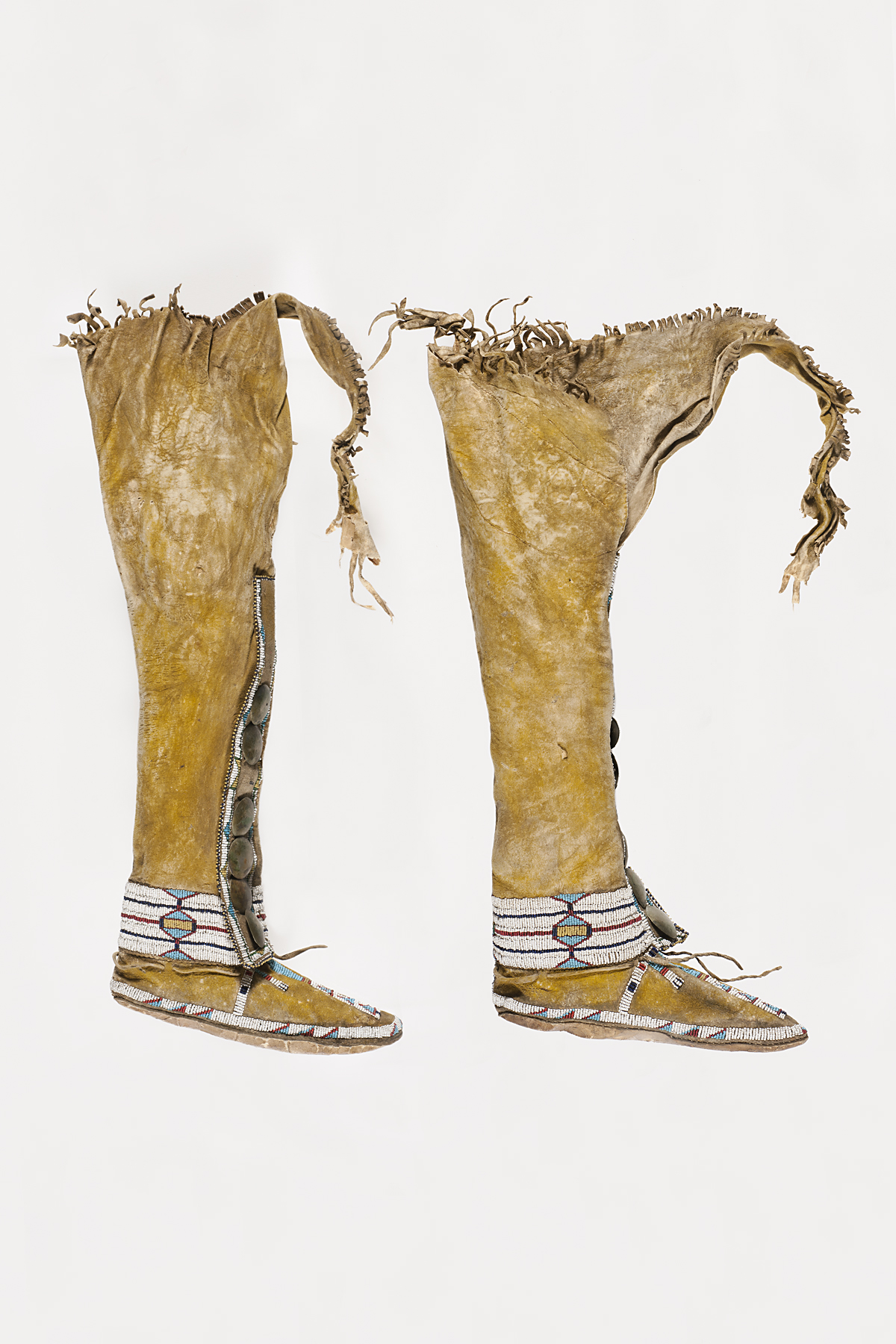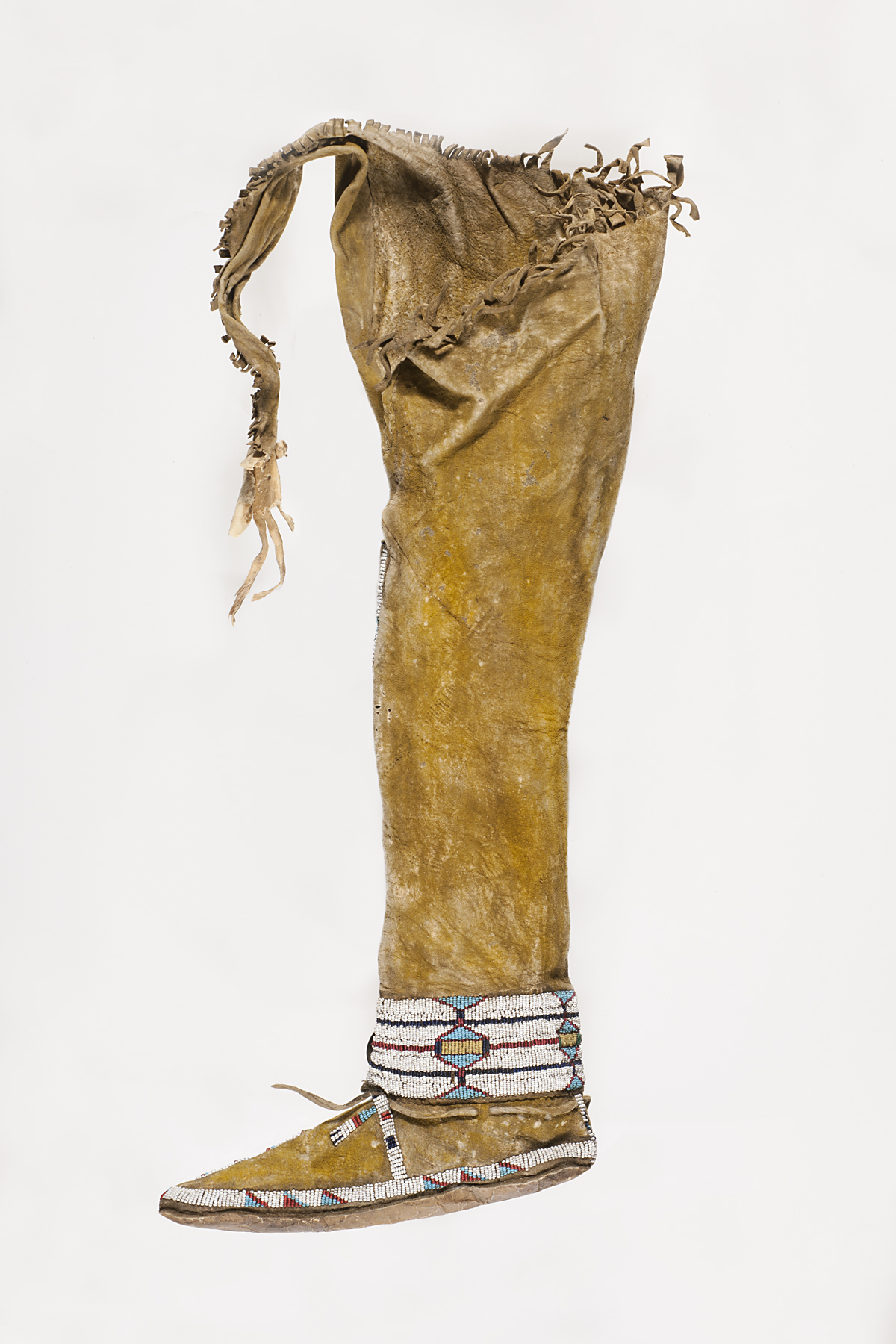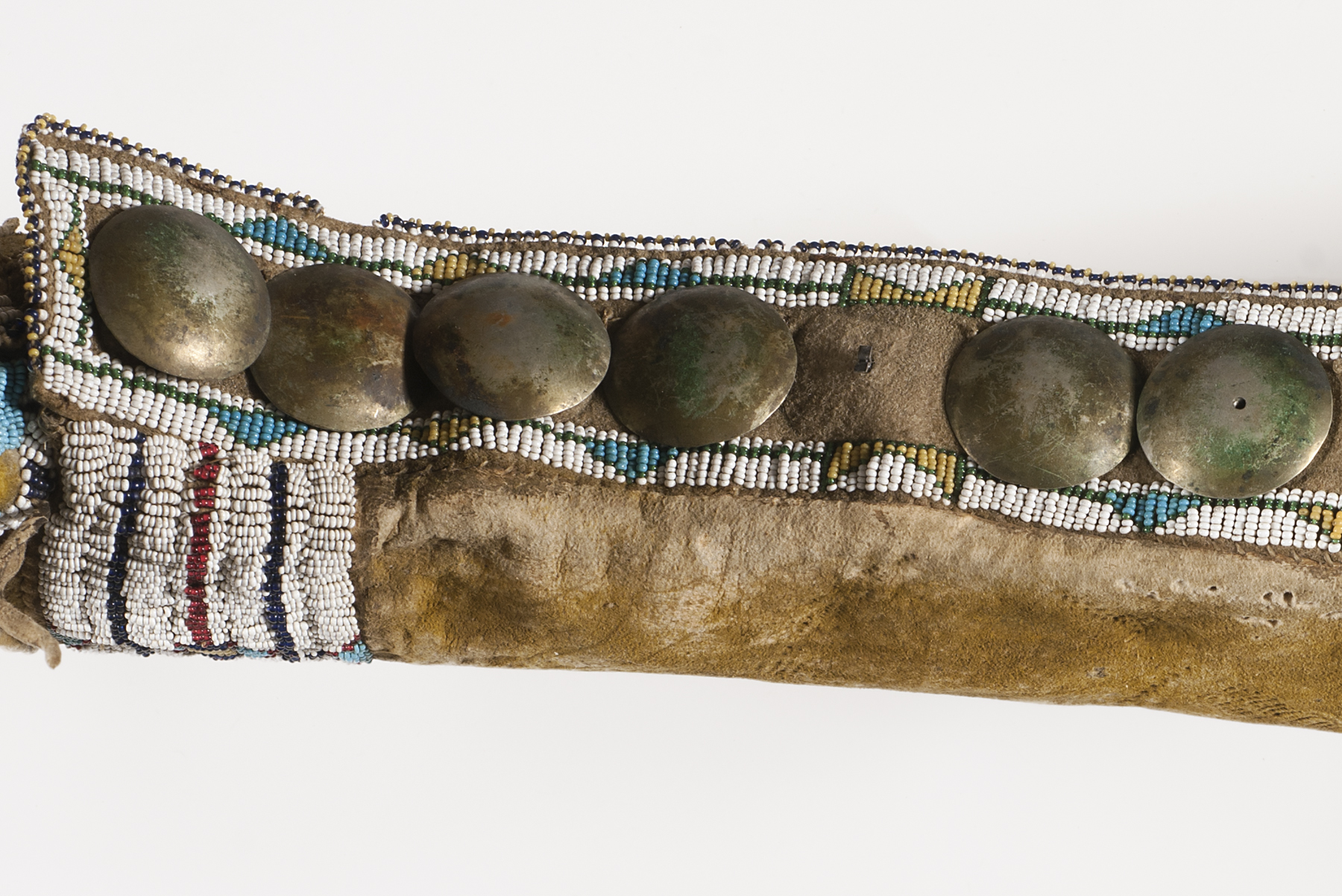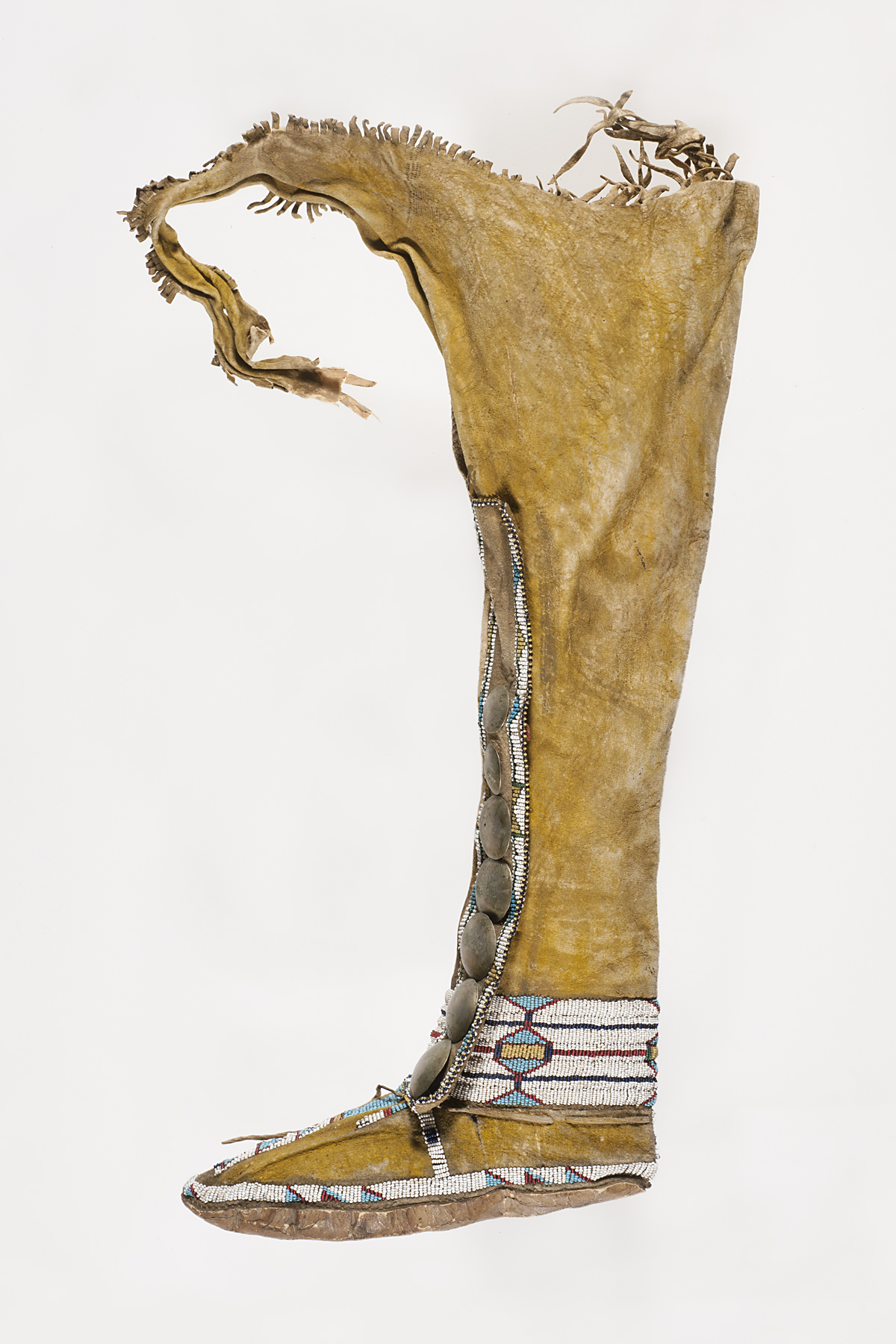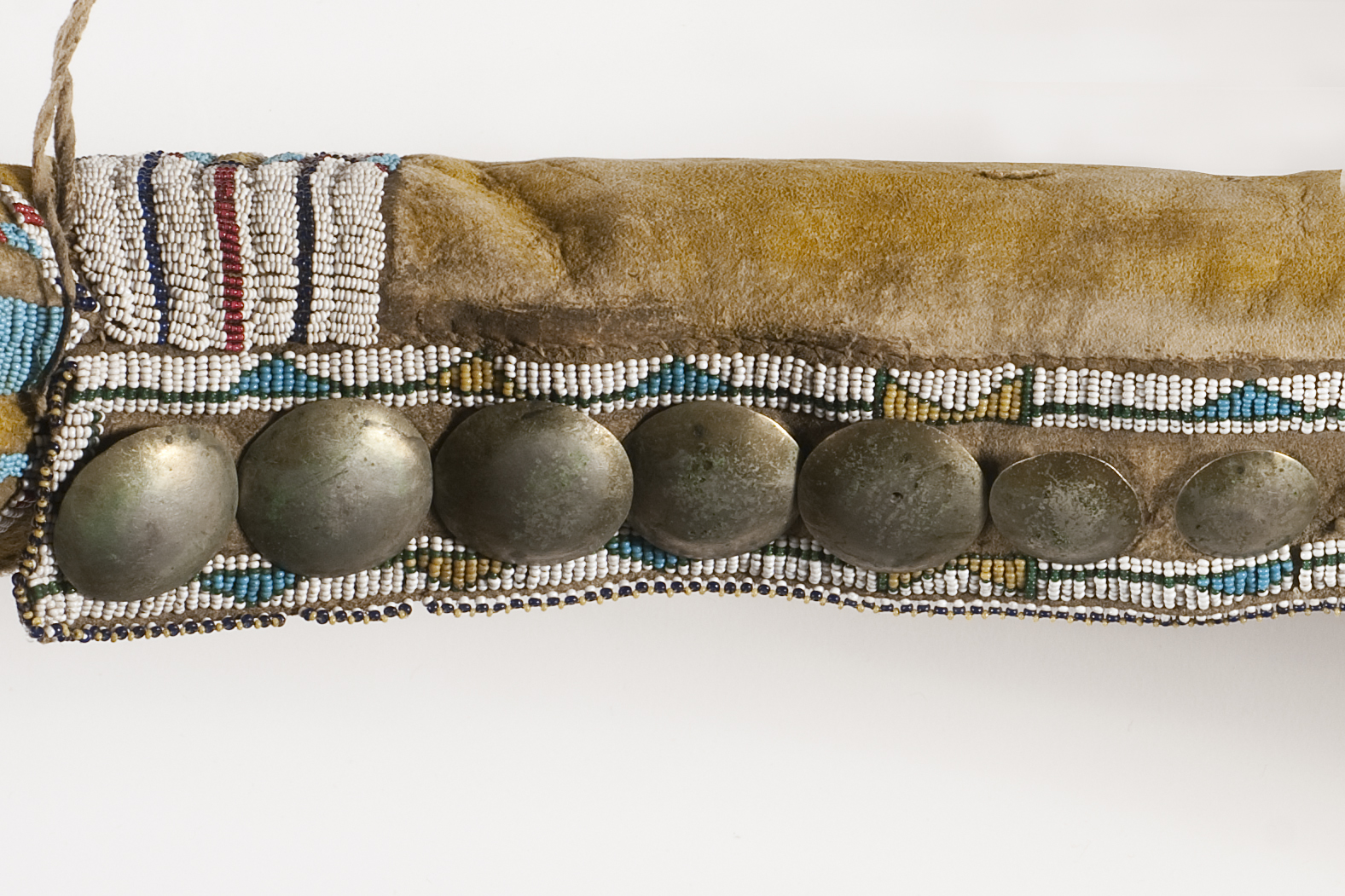pair of beaded boots, unrecorded Cheyenne or Hinono’eino artist
Artwork Overview
pair of beaded boots,
late 1800s–early 1900s
Where object was made: United States
Material/technique: buckskin; pigment; nickel silver; rawhide; beading
Dimensions:
Object Height/Width/Length (Height x Width x Length): a 84.5 x 8 x 25.5 cm
Object Height/Width/Length (Height x Width x Length): 33 1/4 x 3 1/8 x 10 1/16 in
Object Height/Width/Length (Height x Width x Length): b 82.5 x 8 x 25.5 cm
Object Height/Width/Length (Height x Width x Length): 32 1/2 x 3 1/8 x 10 1/16 in
Object Height/Width/Length (Height x Width x Length): a 84.5 x 8 x 25.5 cm
Object Height/Width/Length (Height x Width x Length): 33 1/4 x 3 1/8 x 10 1/16 in
Object Height/Width/Length (Height x Width x Length): b 82.5 x 8 x 25.5 cm
Object Height/Width/Length (Height x Width x Length): 32 1/2 x 3 1/8 x 10 1/16 in
Credit line: William Bridges Thayer Memorial
Accession number: 2007.3773.a,b
Not on display
If you wish to reproduce this image, please submit an image request
